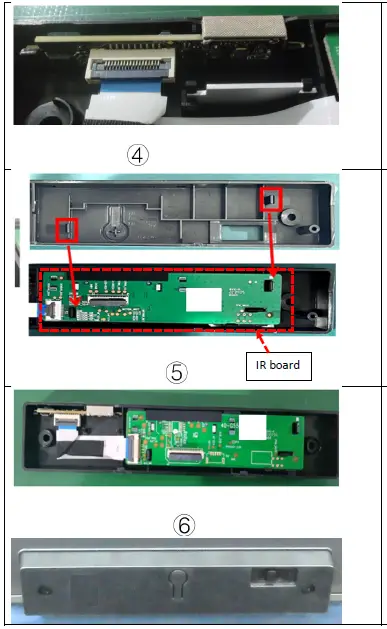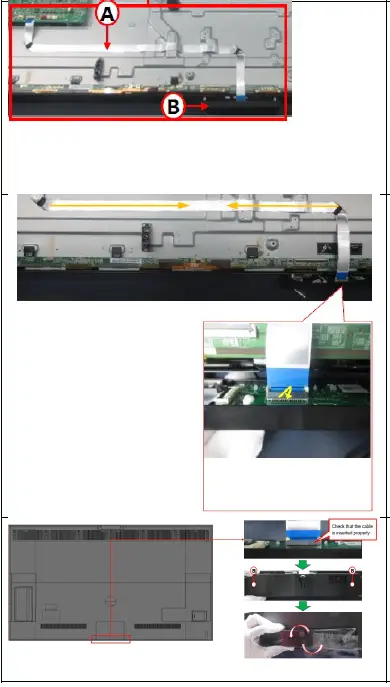Gullfoss GR8V23 Radar Module

User Manual
Product Information
Product Specifications
- Model number: GR8V23
- Electrical rating: 1.7V to 3.6V
- Operating temperature: 0°C to 70°C
- Connectivity: 60 GHz radar transceiver with integrated antennas
- FCC ID: 2BA9D-2823
- IC ID: 30616-2823
- This Module without the RF shielding – Following is the C2PC test plan for each specific host. The host of the module will be a TV only.
- FCC Class II Permissive Change must be filed by the Grantee for each new host configuration.
- Any new antenna type, or higher gain antenna used in host will require a FCC Class II Permissive Change filing.
- Grantee contact information for FCC filing as below:
- Company Name: Gullfoss Flowers LLC
- Contact Person: Carrie L. Tillman
- Address: 450 Alaskan Way South, Suite 200, Seattle, Washington 98104, USA
- Tel.: 302-691-6430
- Email: gullfossflowersllc@gmail.com
Typical use conditions of the module: the radar module will be used in a TV (type: power supplied by AC mains only), for presence sensing and gestures made from the user. Presence detection will enable the TV to sense whether the user is near by or not, so the TV can go in stand-by mode and enable art on the display. Certain gestures will allow the user to control the TV.
The module will be professionally installed in the TV during manufacturing. Due to the module being installed in a TV, it is intended for indoor user and the distance between the TV and the user will be greater than 20 cm.
The transmitter’s power is measured as field strength, if the C2PC permissive change investigation indicates that the module’s power has increased from the original filing test report, the manufacturer, lab, and TCB must investigate to determine if the initial module tested in a standalone module was improperly granted. The module may require a new FCC ID. An inquiry maybe submitted to review a specific case, but the Permissive Change can only be granted once the issue is resolved.
Integration Instructions
Radar module installation in IR board and housing assembly line:
- Insert FFC cable into radar module
- Connect FFC cable to IR board
- Insert reflect metal plate into housing

- Install radar module into the plastic housing
- Install IR board into the plastic housing
- Finish module assembly

Radar module/IR board and housing installation in TV assembly line
- A FFC wire
- B Finished module
Operation method:
- Step 1: Take ⒶFFC wire, tear off all the adhesive release paper, insert the motherboard parallel to the lower pendant mounting position in the middle. Buckle and flatten the piano cover plate; According to the natural bending state of the wire, press the attached wire to the back plane along the yellow arrow shown in the figure; Step 2: Take the Ⓑprocessed lower pendant, insert the FFC wire parallel to the lower pendant end, and fasten the piano cover plate to lock the wire
Process requirements
First remove the adhesive release paper, then plug the cable and buckle the socket, follow the natural state of the FFC wire, in the direction away from the seat, touch and press the wire to stick to the backplane.
The FFC wire is plugged into the socket and then the piano cover is locked
B P-Screw-M3X6
Fasten the lower pendant to the lower front frame with Ⓑ screws, to a torque of 3.0 0.5Kgf.cm
After the lower pendant is fixed, shake the lower pendant back and forth by hand to ensure that it is not loose (Both as shown in the arrow direction, pull the lower pendant outward and press it inward)
 C2PC shall comply the following requirement:
C2PC shall comply the following requirement:
- Confirm and document the continued compliance for the fundamentals under the specific rule part granted for the module (Rule: FCC CFR Title 47, Part 15, Subpart C, Section 15.255).
- Confirm and demonstrate with the radiated test that no additional parasitic, non-compliant emissions exist due to ingress (parasitic oscillations, radiation of stray signals within a host, etc.), are present.
- Full compliance testing is necessary.
- Caution: Changes or modifications to this unit not expressly approved by the party responsible for compliance could void the user’s authority to operate the equipment.
- Information on your device is on file with the FCC and can be found by inputting your device’s FCC ID, which can be found in this User Manual, into the FCC ID Search form available at transition. fcc.gov/oet/ea/fccid
OEM Warning Statement
The modular transmitter must be equipped with either a permanently affixed label or must be capable of electronically displaying its FCC/IC identification number:
If using a permanently affixed label, the modular transmitter must be labeled with its own FCC/IC identification number, and, if the FCC/IC identification number is not visible when the module is installed inside another device, then the outside of the device into which the module is installed must also display a label referring to the enclosed module. The exterior label can use wording such as the following: “Contains Transmitter Module FCC ID: 2BA9D-2823, IC: 30616-2823” Any similar wording that expresses the same meaning may be used. The Grantee may either provide such a label, an example of which must be included in the application for equipment authorization, or must provide adequate instructions along with the module which explains this requirement. In the latter case, a copy of these instructions must be included in the application of the equipment authorization.
Safety and Compliance Information
Using Your Device Around Other Electronic Devices
- The Device, uses, and can radiate radio frequency (RF) energy and, if not used in accordance with its instructions, may cause interference to radio communications and electronic equipment. External RF signals may affect improperly installed or inadequately shielded electronic operating systems, entertainment systems, and personal medical devices.
- While most modern electronic equipment is shielded from external RF signals, if in doubt, check with the manufacturer. For personal medical devices (such as pacemakers and hearing aids), consult with your physician or the manufacturer to determine if they are adequately shielded from external RF signals.
- There are some places where RF signals could constitute a hazard, such as healthcare facilities, and construction sites. If you are not sure, look around for signs indicating that two-way radios or mobile phones should be turned off.
- Devices shall not be used for control of or communications with unmanned aircraft systems.
FCC Compliance Information
Radio Frequency Information
This device complies with part 15 of the FCC Rules. Operation is subject to the following two conditions:
- This device may not cause harmful interference, and
- this device must accept any interference received, including interference that may cause undesired operation.
Note: This equipment has been tested and found to comply with the limits for a Class B digital device, pursuant to part 15 of the FCC Rules. These limits are designed to provide reasonable protection against harmful interference in a residential installation.
This equipment generates, uses and can radiate radio frequency energy and, if not installed and used in accordance with the instructions, may cause harmful interference to radio communications. However, there is no guarantee that interference will not occur in a particular installation. If this equipment does cause harmful interference to radio or television reception, which can be determined by turning the equipment off and on, the user is encouraged to try to correct the interference by one or more of the following measures:
- Reorient or relocate the receiving antenna.
- Increase the separation between the equipment and receiver.
- Connect the equipment into an outlet on a circuit different from that to which the receiver is connected.
- Consult the dealer or an experienced radio/TV technician for help.
- Changes or modifications that are not expressly approved by the party responsible for compliance could make the device no longer comply with the FCC Rules.
Information on your device is on file with the FCC and can be found by inputting your device’s FCC ID, which can be found on the bottom of the Device, into the FCC ID Search form available at transition.fcc.gov/oet/ea/fccid.
ISED Compliance Information
This device contains license-exempt transmitter(s)/receiver(s) that comply with Innovation, Science and Economic Development Canada’s license-exempt RSS(s). Operation is subject to the following two conditions:
- This device may not cause interference; and
- This device must accept any interference, including interference that may cause undesired operation of the device.
The device could automatically discontinue transmission in case of absence of information to transmit, or operational failure. Note that this is not intended to prohibit transmission of control or signaling information or the use of repetitive codes where required by the technology.
Information Regarding Exposure to Radio Frequency Energy
This equipment complies with IC RSS-102 RF exposure limits set forth for an uncontrolled environment.
CAN ICES-3(B)/NMB-3(B)
RF Exposure
The radiated output power of this device meets the limits of FCC/ISED radio frequency exposure limits. This device should be operated with a minimum separation distance of 20 cm between the equipment and a person’s body.
The module will only be used in a TV, therefore a separation distance beyond 20 cm will be maintained.
Documents / Resources
 |
Gullfoss GR8V23 Radar Module [pdf] User Manual GR8V23, GR8V23 Radar Module, Radar Module, Module |



